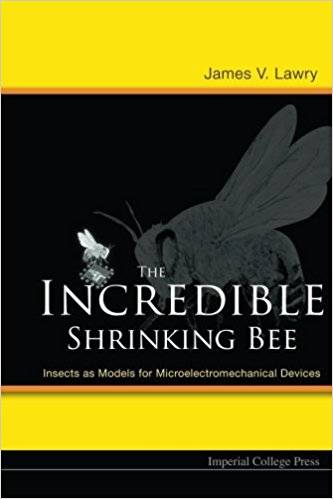James V. Lawry, "The Incredible Shrinking Bee: Insects As Models for Microelectromechanical Devices"
2006 | pages: 274 | ISBN: 1860945856 | PDF | 1,7 mb
2006 | pages: 274 | ISBN: 1860945856 | PDF | 1,7 mb
Because vertebrate circulations do not work when shrunk to insect sizes, insects may help us design our smallest machines. Within small bodies, bees separate diffusing substances in an open cavity assisted by locomotion and the beat of the heart. The open arthropod circulation, however, is most efficient when shrunk until its large three-dimensional volume of blood turns into a two-dimensional film of fluid covering only the internal surfaces. This transformation increases the chances to near-certainty that molecules can diffuse from one point to another without getting lost. The Incredible Shrinking Bee expresses mathematics in words so that most readers can compare today's microelectromechanical (MEMS) devices with a honeybee's circulation, introducing ideas of biominiaturization to workers interested in developing compact energy and chemical systems. When it comes to shrinking systems, bees have the edge on human ingenuity. A farrago of ideas and disciplines, The Incredible Shrinking Bee provides a springboard for discussion and research for computer scientists, entomologists, systems biologists, physiologists, mathematicians, engineers and anyone wanting to learn how bees move things around in their bodies to do what we are trying to do smaller and better.
My Link



